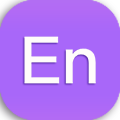英语中的“时体态式”的理解
2024-09-28 11:40:45 学考宝 作者:佚名
问题描述
时:现在、过去、将来、过去将来。
体:进行体、完成体。
态:主动语态、被动语态。
式:即语气——直陈、祈使、虚拟。
这是我在网上看到的一些解释,产生一下几个问题:
1. 关于时体态式的解释以上对吗?
2. 为什么“体”中没有一般或者简单这个体呢?
(因为时态中有一般现在时或者叫简单现在时)
3. 所以一般现在时或简单现在时,这个一般、简单到底是什么意思呢?它不像完成或进行那么好理解。
感谢各位专家老师为学生答疑解惑,谢谢。
老师答疑
刘老师:
英语专家张月祥先生著有《英语动词的时体态式》一书,里面详细论述了这个问题。
内容跟你说的基本一致:
▲时(tense)是个语法范畴,它是表示时间区别的动词形式。时分为现在时,过去时,将来时,过去将来时。
▲体(aspect)也是一个语法范畴,它表示动作或过程在一定时间内处于何种状态的动词形式。体分为进行体和完成体。进行体是由助动词be的一定形式加主动词的-ing分词构成。完成体是由助动词have的一定形式加主动词的-ed分词构成。
▲态(voice)即“语态”,也是个语法范畴,它表示主语与谓语动词之间的主动或被动关系的动词形式。英语动词有两种语态:主动态(active voice)和被动态(passive voice)。英语动词的主动态是没有语法标记的,而被动态是有标记的,通常是由助动词be的一定形式加及物动词的-ed分词构成,即be-型被动态(Be-passsive)。
▲式(mood)又译作“语气”,也是个语法范畴,它是区别说话人以何种语气说话的动词形式。英语中有陈述式(Indicative Mood)、祈使式(Imperative Mood)、虚拟式(Subjunctive Mood)。
★关于你的第2个问题:语法中,关于动词的“体”是这样解释的:In grammar, “aspect” is the way that a verb group shows whether an activity is continuing, is repeated, or is completed. For example, in “They were laughing”, the verb is in the progressive aspect and shows that the action was continuing.
这说明,“体”是指动词的“进行”或“完成”。
除了上述“体”外,其他几个概念英语的解释是:
★时态:The tense of a verb group is its form, which usually shows whether you are referring to past, present, or future time.
★语态:In grammar, if a verb is in the active voice, the person who performs the action is the subject of the verb. If a verb is in the passive voice, the thing or person affected by the action is the subject of the verb.
★语气:In grammar, the mood of a clause is the way in which the verb forms are used to show whether the clause is, for example, a statement, a question, or an instruction.
★至于你说的“一般式”,就像主动语态不需要标记一样,又如我们说的动词不定式,通常都是指一般式(如:to learn),而不是指进行时或完成时(如:to be learning 或to have learned),所以这个问题就不需要解释了。


















